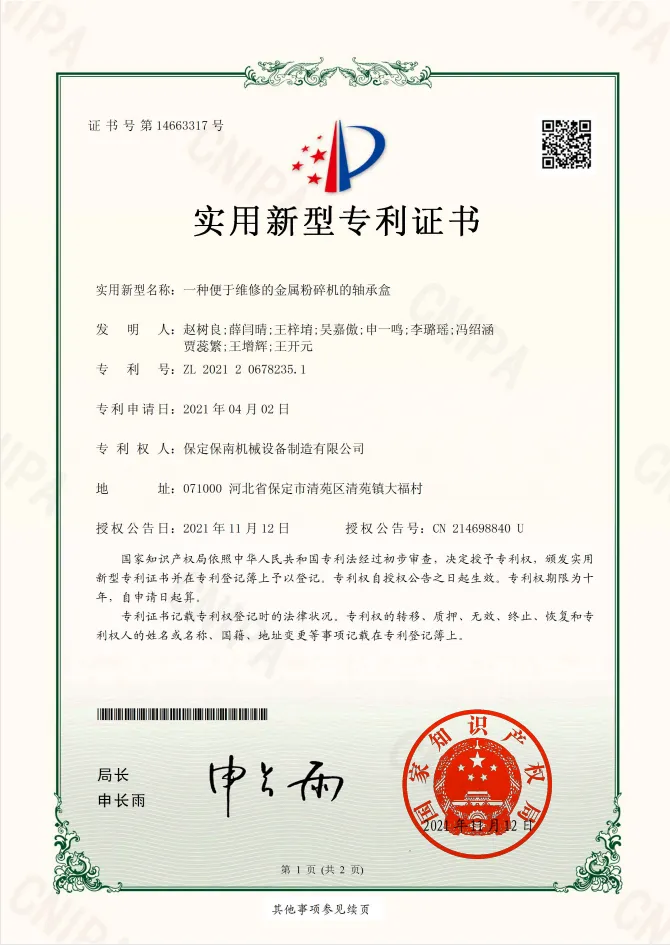
10 月 . 06, 2024 13:42 Back to list
Eddy Current Separator Design Principles and Applications
Eddy current separators are innovative devices widely used in the recycling and waste management industries to separate non-ferrous metals from other materials. Their design hinges on the principles of electromagnetic induction, allowing for efficient metal recovery and environmental sustainability. This article delves into the essential elements of eddy current separator design, its operational principles, and its applications.
Operational Principles
The eddy current separator operates based on Faraday's law of electromagnetic induction. When a conductor moves through a magnetic field, an electric current is induced in the conductor. This induced current, known as an eddy current, generates its own magnetic field, which interacts with the external magnetic field. The resulting repulsive force causes non-ferrous metals, like aluminum and copper, to be propelled away from other materials, allowing for effective separation.
The device typically consists of a rotating magnetic drum, a feed conveyor, and a discharge conveyor. As materials are fed onto the conveyor belt, the non-ferrous metals pass over the rotating drum. The changing magnetic field induces eddy currents in the metallic particles, causing them to experience a repulsive force and move in a different direction than non-metallic materials. The design of the conveyor system ensures that the separated metals are collected efficiently for further processing or recycling.
Design Considerations
The design of an eddy current separator is crucial for its efficiency and effectiveness. Several factors must be considered when developing the apparatus
1. Magnetic Field Strength The strength and configuration of the magnetic field are critical. Powerful magnets, such as rare earth magnets, are often used to enhance the separation efficiency. The design must ensure that the magnetic field is concentrated in a specific area to maximize the interaction with the incoming materials.

2. Drum Size and Speed The size of the drum and its rotational speed significantly influence the separator’s performance. A larger drum can accommodate more material, while the speed must be optimized to allow sufficient time for separation while preventing material clogging.
3. Material Feed Rate The feed rate of the materials introduced into the separator needs to be controlled to optimize separation performance. If the feed rate is too high, it can lead to inefficiencies and decreased separation quality.
4. Adjustable Discharge Mechanism An adjustable discharge mechanism allows operators to fine-tune the separation process based on varying material compositions. This flexibility is essential in processing diverse waste streams.
5. Maintenance and Durability The design should also consider the harsh conditions of waste processing facilities. Using durable materials and creating accessible maintenance points enhance the separator's lifespan and reduce downtime.
Applications
Eddy current separators are extensively used in various sectors. One of their primary applications is in the recycling industry, where they help recover valuable non-ferrous metals from scrap materials. This process not only reduces waste but also conserves natural resources by reintroducing metals into the supply chain.
Additionally, they are utilized in the mining industry to separate valuable ores from gangue. In waste-to-energy facilities, eddy current separators play a role in diverting metals from incineration processes, thus promoting resource recovery and reducing environmental impact.
In conclusion, the design of eddy current separators is a complex interplay of engineering principles aimed at enhancing the efficiency of metal recovery processes. By optimizing factors like magnetic field strength, drum size, and feed rate, manufacturers can create advanced systems that significantly boost recycling efforts. As the demand for sustainable waste management practices continues to grow, the role of robust and effective eddy current separators will only become more prominent in various industries.
Latest news
Unveiling the Power of Eddy Current Separator
NewsSep.25,2024
Transform Your Home Recyclin:home metal shredder
NewsSep.25,2024
The Future of Waste Management with Recycling Line Picker
NewsSep.25,2024
The Benefits of a Metal Recycling Plant
NewsSep.25,2024
Revolutionize Material Separation with Onwang Technology
NewsSep.25,2024
Innovative Waste Management: Unveiling the MSW Sorting Plant
NewsSep.25,2024